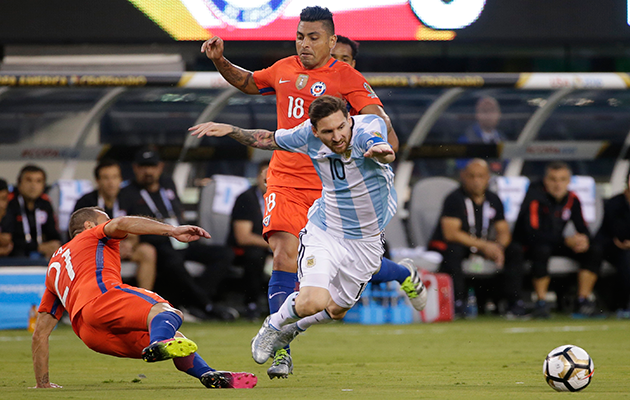For the last 12 minutes of Argentina’s 1-1 draw at home to Venezuela last month, Daniel Mollo of Buenos Aires Radio Cooperativa did not even bother commentating on the action. Instead, he spent his time citing great players from Argentina’s past, while moaning about those of the present day and calling on them to ask the local population for forgiveness.
That is the kind of pressure that Argentina are facing in Thursday’s crunch World Cup qualifier at home to Peru. Failure to win will leave Lionel Messi and company in serious danger of missing out on Russia 2018. At best they will remain in their current position, fifth in the table – the play-off spot. At worst they will slide down to sixth, outside the qualification places and with a final game away to Ecuador, where the altitude of Quito has so often proved a trauma for the Argentinians.
The pressure, then, is well and truly on. And Argentina have responded by moving the venue of Thursday’s match a few miles across town. The normal Buenos Aires base is River Plate’s stadium. It has the biggest capacity available, but with the stands a fair way from the pitch it can come over as an emotionally cold ground. There is no chance of that at the home of Boca Juniors, the Bonbonera. It is famous for the passion generated inside its cramped confines. ‘Bonbonera’ means ‘chocolate box’ – a reference to the face that the ground appears to go straight upwards, with everyone close to the action.
There is, of course, the risk that this might backfire, that instead of being hostile to the Peruvians, the atmosphere may end up intimidating the under-pressure Argentinians, with Daniel Mollo and his kind ready to drop their verbal bombs.
The other risk is of history repeating itself. The last time the Bonbonera was used to stage a World Cup qualifier was for the final game of the 1998 campaign. Argentina had already sealed their place in France, and so the 1-1 draw with Colombia was of limited relevance.
The last meaningful qualifier in the Bonbonera was all the way back in 1969, in the last round of the Mexico 1970 campaign. And as coincidence would have it, Argentina were at home to Peru and needing a win to qualify. Under pressure and without much defensive pace – the similarities with this week’s match are uncanny – Argentina were held to a 2-2 draw. It is the only time they have failed to qualify for a World Cup. Peru, meanwhile, began a golden age which included some captivating performances on the way to the 1970 quarter final, a Copa America title in 1975, and three World Cup appearances between 1970 and 1982.
There have been none since. Peru, though, have found some form – they have four victories and a draw from the last six matches, and were only team to win both of last month’s two rounds – and they are anxious to release the ghost of 69 onto the Bonbonera pitch.
Four of their players, though, will not be able to tread on the turf. Right winger Andre Carrillo, whose pace and power could have done some serious damage to the home defence, is suspended, as is his substitute Paolo Hurtado. So too are key playmaker Cristian Cueva, and dependable centre back Cristian Ramos. These are important absences for Peru’s biggest game in decades.
But which will weight heaviest – the Peruvian absences or the pressure on the Argentinians? It is entirely possible for both sides to finish in the top five. But there is a clear risk of one of them being overtaken by Chile, Paraguay or Ecuador and missing out entirely on the chance of making it to Russia. Thursday’s match might prove too tense to provide much quality. But this time even Daniel Mollo will surely have his eyes glued to the pitch all the way to the final whistle.







